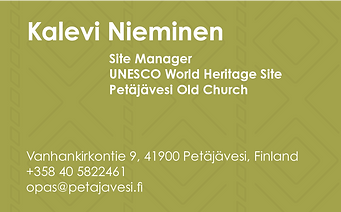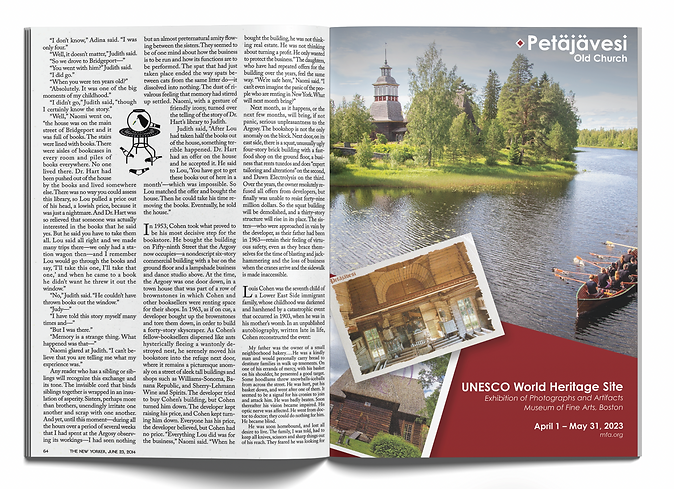Petäjävesi Old Church
UNESCO World Heritage Site Branding
Spring 2023
Logotype


Brand Colors
Font

Logo
Inspired by the landscape and geometry of the church



Letterhead & Info-sheet
Designed for A4 European Paper.


Business Cards
Business cards designed for 2.5" x 4" cardstock




Information Booklet
This booklet Describes the Church and gives information on the UNESCO organization.







Envelopes
Designed for C5 European envelopes,

New York Times Ads
Designed for three subsequent issues.


App & Website



Site Van

Graphic Design Synthesis Course Overview
Written by Douglass Scott
This course provides students experience in the design of identity, information, persuasive messaging, and publication projects, as well as focus on cross-platform (print, digital, and three-dimensional) manifestations – all based on a single area of content. Its scope reflects the multifaceted components that comprise real-world comprehensive design projects. Through additional research and readings, students are to perform at high level and demonstrate how the readings of theoretical material reflect in their projects.
The course allows the student to choose a site from the list of the United Nations World Heritage program, about which to design an inter-related group of projects. This course will present information and guidance that will allow the students to design pieces in the following areas of graphic design: identity, mark and logotype design, typography, color, publication, three-dimensional site sign in multiple languages, advertising, website design, and information design. There will be an emphasis on design process, as well the development of cross-platform design systems.
Petäjävesi Old Church Overview
Written by UNESCO
Built for a small Lutheran parish in central Finland, Petäjävesi Old Church is located on a peninsula at Lake Solikkojärvi and is surrounded by an agricultural landscape with lakes and forests, typical of the region. Construction of this wooden church was led by a local master builder, Jaakko Leppänen. The bell tower was added to the western part of the church in 1821 by the master’s grandson, Erkki Leppänen.
Petäjävesi Old Church is representative of the architectural tradition of wooden churches in northern Europe. The Old Church is a unique example of traditional log construction techniques applied by the local peasant population in northern coniferous forest areas. European architectural trends, which have influenced the external form and layout of the church, have been masterfully applied to traditional log construction.
The adaption of forms and techniques of varied provenance makes this church a multi-layered landmark and an outstanding example of Nordic church architecture. The church is built entirely of pine wood, worked in a constructive and
economical manner.
The layout and interior of the church, with intricate perspectives, vaulting and a central cupola, combines the influences of Renaissance, Baroque and Gothic styles with the Finnish vernacular tradition of log construction. The steepness of the pitched roof recalls the Gothic tradition. The interior’s hand-carved log surfaces with their silky patina and the silvery sheen on the seasoned walls lend the hall its unique atmosphere, which is further enhanced by the slightly irregular placement of the floor beams and pews. The distinctive features of the interior are the elaborately carved pulpit, pews, chandeliers, and galleries with balustrades, which are entirely the work of local craftsmen and artists.
In 1879, a new church was built on the other side of the strait and the Old Church went out of use. Repairs, restoration and conservation works started in the 1920s when the historical and architectural value of the Old Church was recognized. Today, the churchyard is still in use, while the church is used only in the summer.